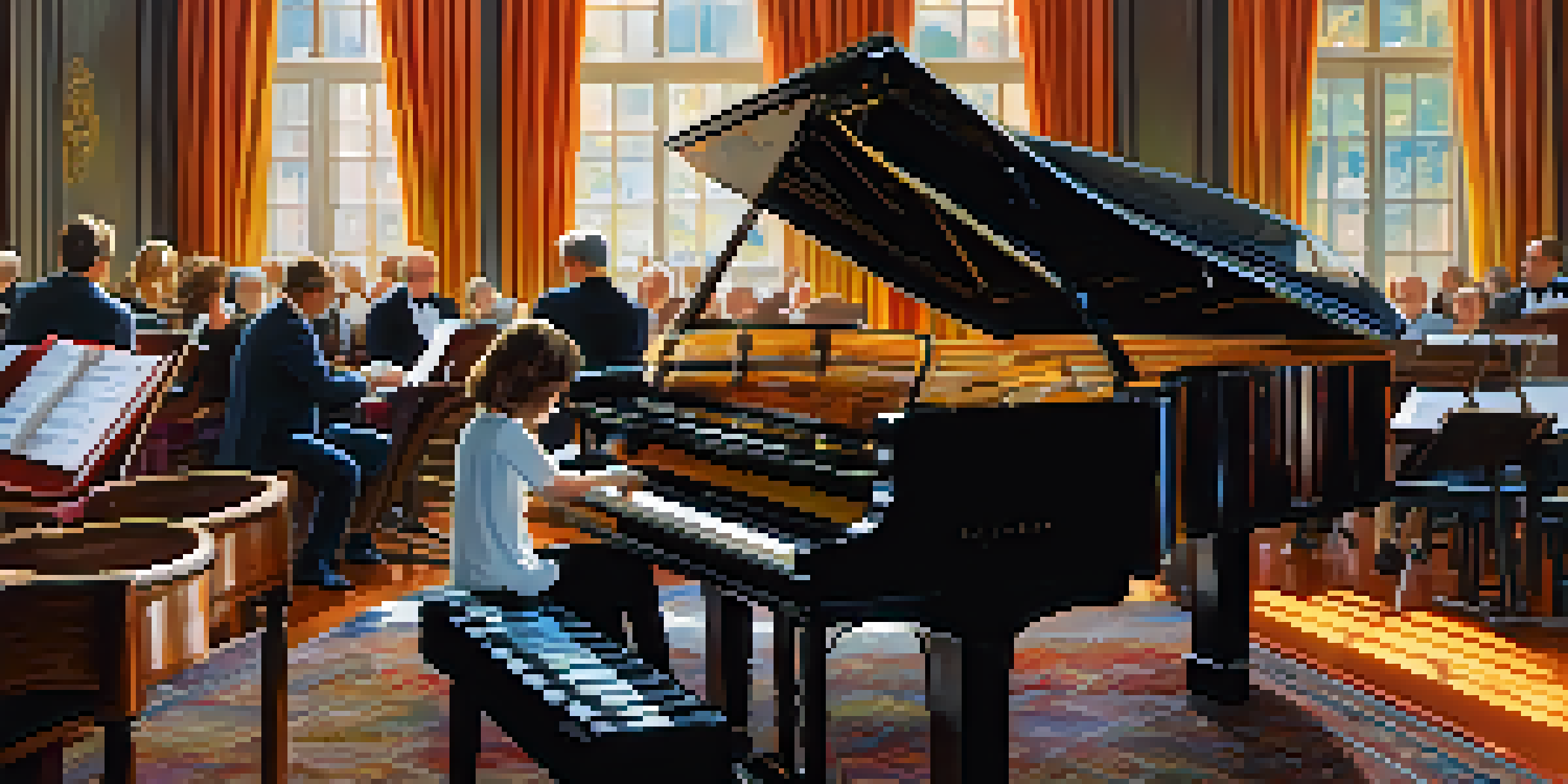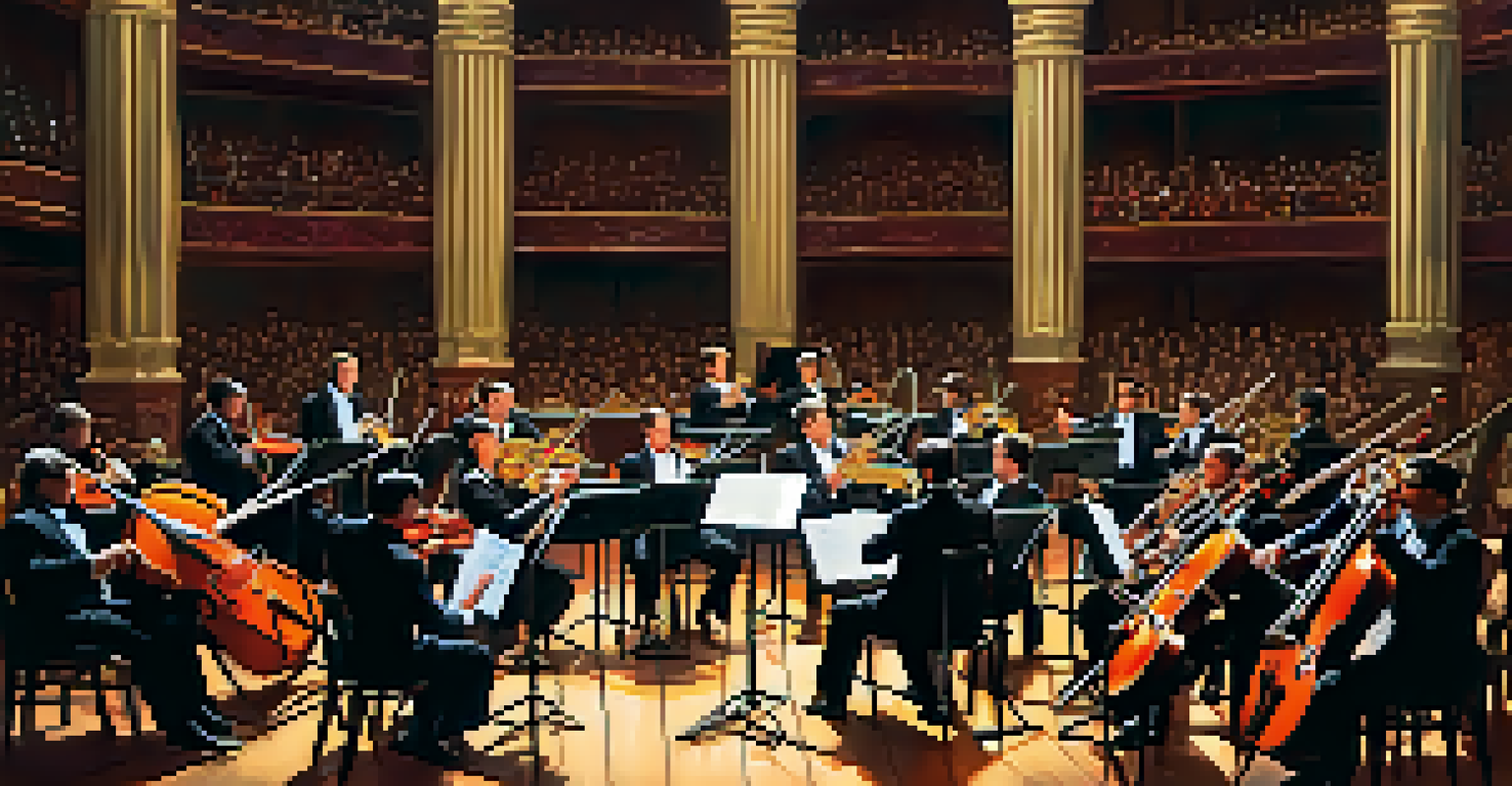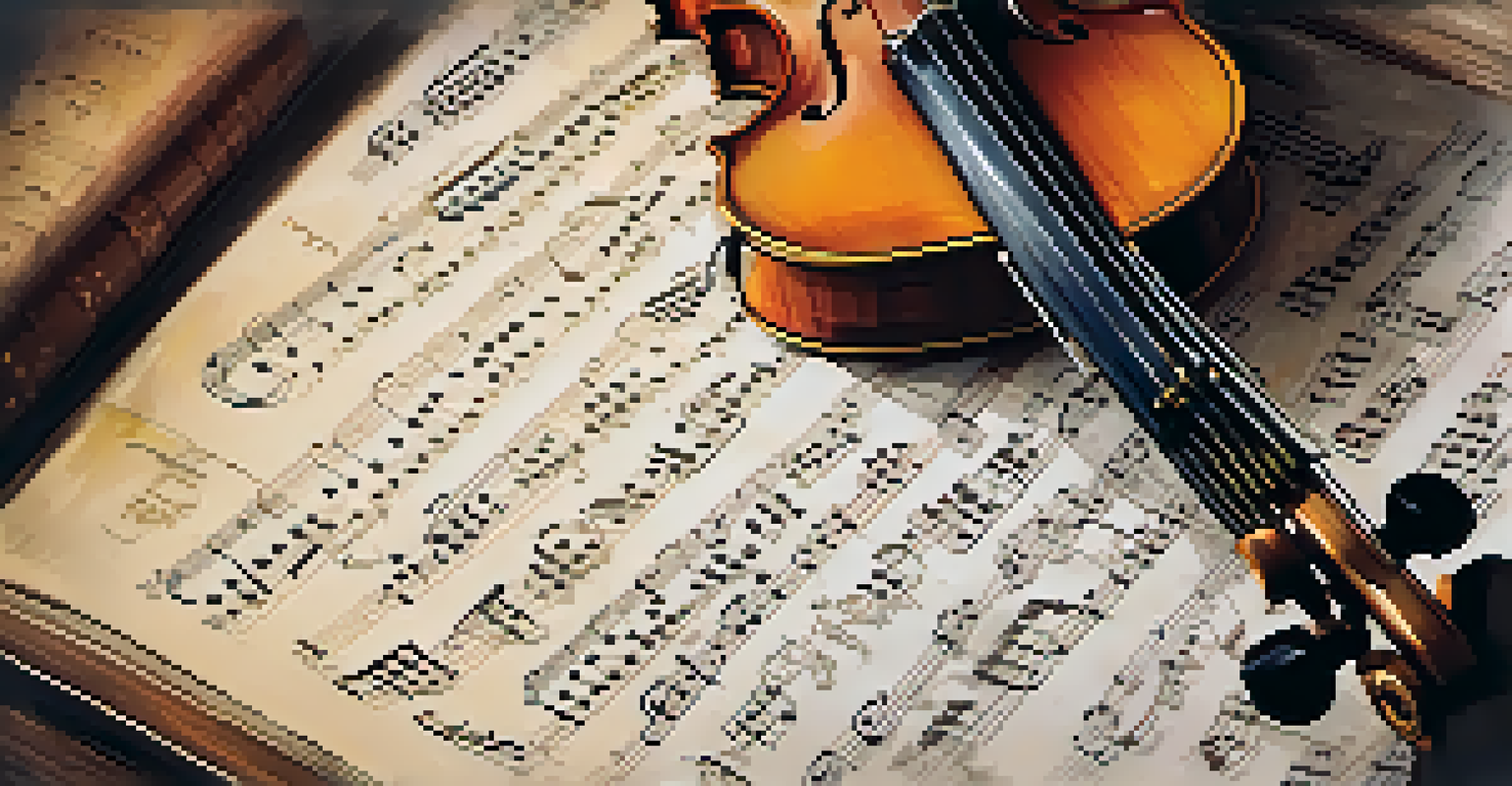The Art of Orchestration: Expanding Your Musical Palette

Understanding the Basics of Orchestration
Orchestration is the art of arranging music for an orchestra. It involves choosing which instruments play what parts of a composition, allowing the composer to express their vision fully. Understanding the capabilities and characteristics of different instruments is crucial, as each brings its unique color to the music.
Music can change the world because it can change people.
For example, a flute's light, airy tone differs significantly from the deep, resonant sound of a cello. By knowing these nuances, you can create a rich tapestry of sound that captivates your audience. This foundational knowledge serves as the bedrock for more advanced orchestration techniques.
Ultimately, mastering orchestration opens doors to new creative possibilities, enabling you to communicate emotion and storytelling through your music. It's a skill that evolves with practice and experimentation, much like painting with a broader palette of colors.
The Role of Instrument Families in Orchestration
In an orchestra, instruments are grouped into families: strings, woodwinds, brass, and percussion. Each family has its distinct timbre and range, allowing for a diverse range of sounds. Understanding how to blend these families can enhance your orchestration significantly.

For instance, combining the bright sound of trumpets with the warmth of violins can create a powerful dynamic. Similarly, using woodwinds to add subtle textures can soften a piece's intensity. Recognizing how to balance these instruments creates harmony and depth in your compositions.
Understanding Instrument Families
Recognizing the distinct timbres and ranges of instrument families enhances orchestration and creates a rich sound.
Moreover, experimenting with different instrument combinations can lead to unexpected and exciting results. This exploration helps you discover your unique sound, making your music stand out in a crowded field.
Exploring Dynamics and Articulation in Orchestration
Dynamics refer to the volume of music, while articulation describes how notes are played. These elements are crucial in orchestration, as they can transform a piece from mundane to magnificent. By varying dynamics, you can evoke emotions and create tension within your music.
The only truth is music.
For example, a sudden crescendo can build excitement, while a decrescendo can lead to a poignant moment of reflection. Additionally, different articulations, such as staccato or legato, can affect the overall feel and flow of your piece. Understanding how to manipulate these factors allows you to enhance your musical storytelling.
Incorporating dynamics and articulation thoughtfully can make your orchestration feel alive and vibrant, keeping listeners engaged from start to finish.
Using Color and Texture to Enrich Your Music
Color in orchestration refers to the unique sound quality or timbre of instruments, while texture describes how layers of sound interact. Both elements are vital to creating a rich auditory experience. By thoughtfully combining different instruments, you can create varied textures that add depth to your compositions.
For instance, layering strings with woodwinds can produce a lush, full sound, while a sparse texture might involve a solo instrument with minimal accompaniment. Experimenting with these combinations helps you find your musical voice, allowing you to express a wide range of emotions.
The Power of Dynamics and Articulation
Manipulating dynamics and articulation can transform a musical piece, evoking emotion and maintaining listener engagement.
Ultimately, the interplay of color and texture can transport your listeners, drawing them deeper into the world you've created through your music.
The Importance of Score Study for Aspiring Orchestrators
To become a skilled orchestrator, studying scores from established composers is invaluable. Analyzing how they utilize instruments, dynamics, and textures can provide insight into effective orchestration techniques. This practice allows you to internalize successful strategies while developing your style.
For example, examining a symphonic work by a composer like Beethoven can reveal how he skillfully balances various instrument families. By dissecting these scores, you can learn to identify patterns and approaches that resonate with you. This not only improves your orchestration skills but also deepens your appreciation for the music itself.
Incorporating score study into your routine will undoubtedly enhance your abilities, helping you to become a more versatile and confident composer.
Experimentation: The Key to Finding Your Unique Sound
One of the most exciting aspects of orchestration is the opportunity for experimentation. Trying out different instrument combinations and arrangements can lead to unexpected results that inspire creativity. Embracing this trial-and-error approach allows you to discover your unique sound and style.
For instance, you might find that a particular combination of brass and strings creates an atmosphere you never anticipated. Similarly, using unconventional instruments or techniques can yield fresh and innovative compositions. Don't be afraid to step outside your comfort zone and explore new ideas.
Collaboration Enhances Composition
Working with musicians provides invaluable insights that improve orchestration and enrich the overall interpretation of your music.
Ultimately, experimentation fosters growth and creativity, pushing you to expand your musical horizons and express your individuality as a composer.
Collaborating with Musicians to Enhance Orchestration
Collaboration is an essential aspect of orchestration, as working with talented musicians can bring your compositions to life. Engaging with performers allows you to understand their perspectives, capabilities, and preferences, leading to more effective orchestration. This partnership often results in a richer, more nuanced interpretation of your music.
For example, consulting with a violinist about specific passages can reveal insights about playability and sound that you might not have considered. Moreover, rehearsing with musicians enables you to make real-time adjustments, improving the overall quality of your piece. This collaborative spirit can enhance both your skills and your music.

Embracing collaboration not only enriches your orchestration but also fosters a sense of community, making the creative process more enjoyable and fulfilling.
Final Thoughts: Mastering the Art of Orchestration
Mastering orchestration is a journey that requires patience, practice, and passion. As you explore the techniques discussed in this article, remember that there is always room for growth and experimentation. Each composition is an opportunity to refine your skills and push the boundaries of your creativity.
Whether you're a seasoned composer or just starting, embracing the art of orchestration will elevate your music to new heights. By understanding the intricacies of instrument families, dynamics, and collaboration, you can create powerful, evocative pieces that resonate with listeners.
As you continue on your orchestration journey, keep an open mind and be willing to learn from both successes and failures. Your unique voice will emerge as you experiment, collaborate, and immerse yourself in the rich world of orchestral music.